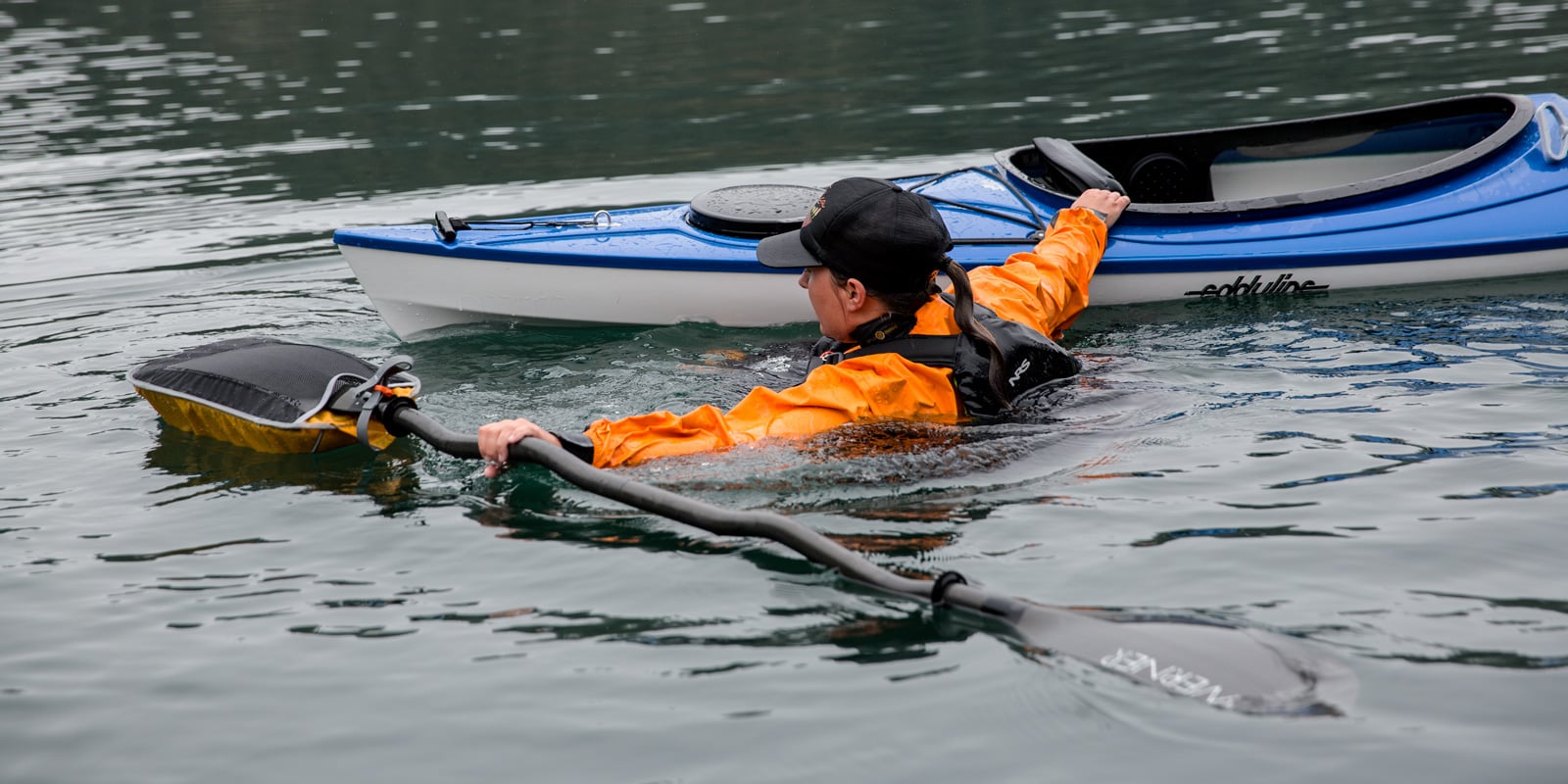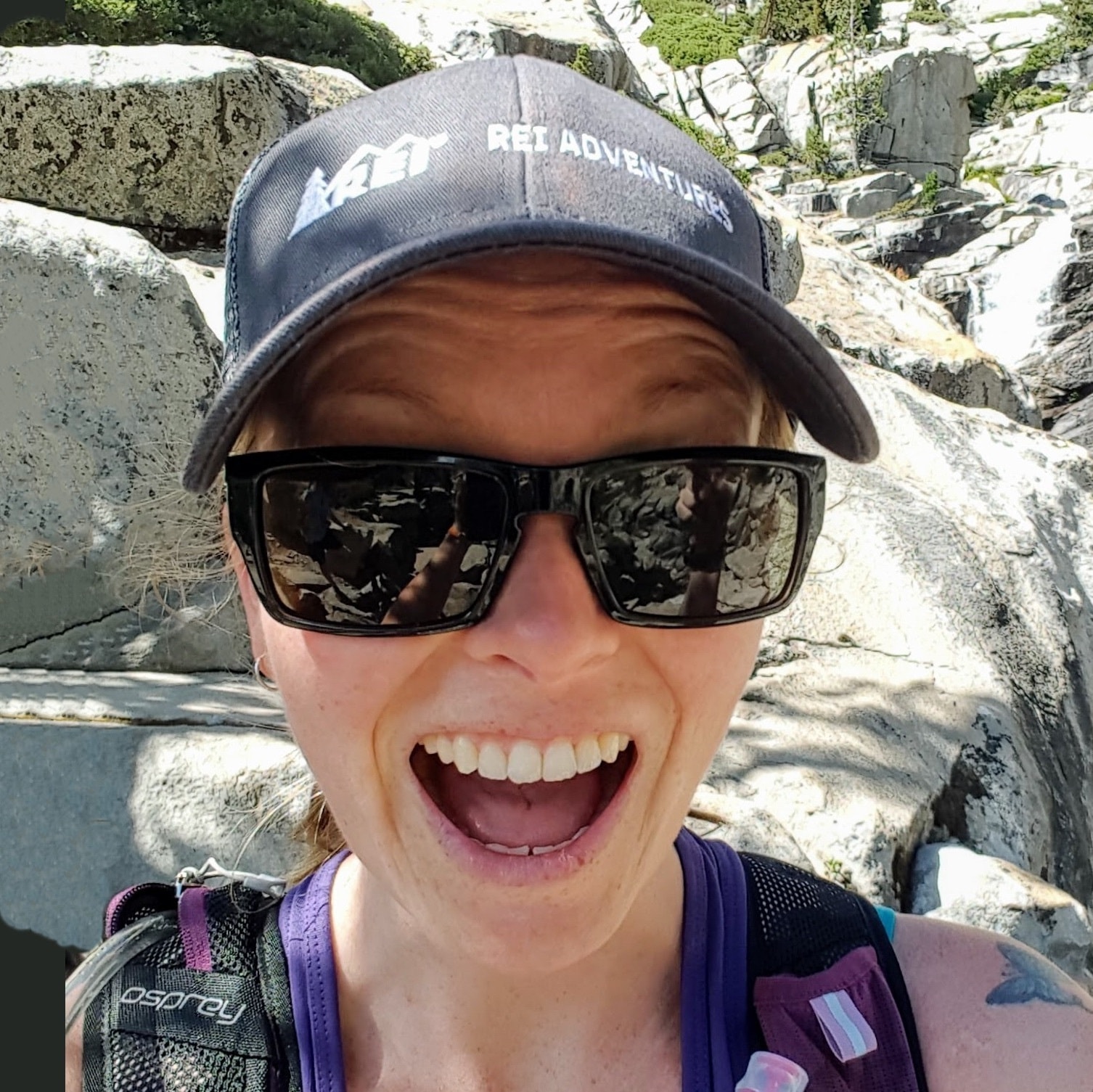Paddling with a pal is more fun—and safer. If you do go solo, though, or you dump your boat when your paddling crew is far away, then you're in for either a self rescue or very long swim. This article assumes you've mastered the wet exit. Here are the basic self rescue steps that will get you back in the cockpit again:
- Do a wet exit.
- Reach under your boat and grab your paddle float.
- Hook a leg inside the cockpit to keep the boat close.
- Deploy the paddle float, attaching it to one of your paddle blades.
- Flip the boat over and set up the paddle like an outrigger (with float in the water).
- Hook a knee over the paddle to boost yourself out of the water and shimmy your body onto the rear deck.
- Carefully pivot and slip your legs into the cockpit, then turn around.
- Pump out water, attach the spray skirt and paddle on.
It's wise to learn the wet exit, self rescue and T-rescue from an experienced guide or instructor, and to practice it in a calm, safe environment until it's second nature.
Video: How to Do a Kayak Self Rescue
Before You Capsize
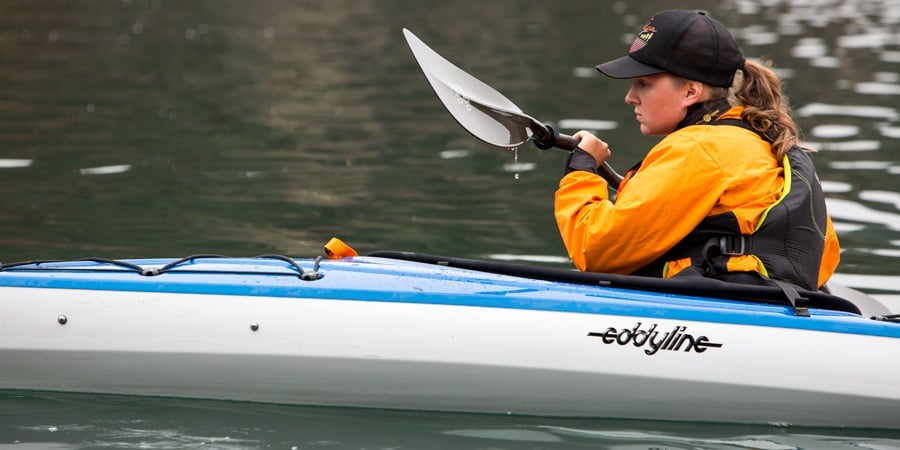
- On shore: Figure out how to attach the float to a paddle blade; practice so it will be easy to do in a rescue situation. If the float is inflatable, check for air leaks.
- Before you launch: Check that your paddle float is securely stowed—under the deck lines in front of the cockpit or in another easily accessible spot.
- In the water: If you feel your boat rolling over, try to perform a brace to prevent capsizing. If you don't know how, read How to Brace or, better yet, sign up for a class.
First Steps After Capsizing
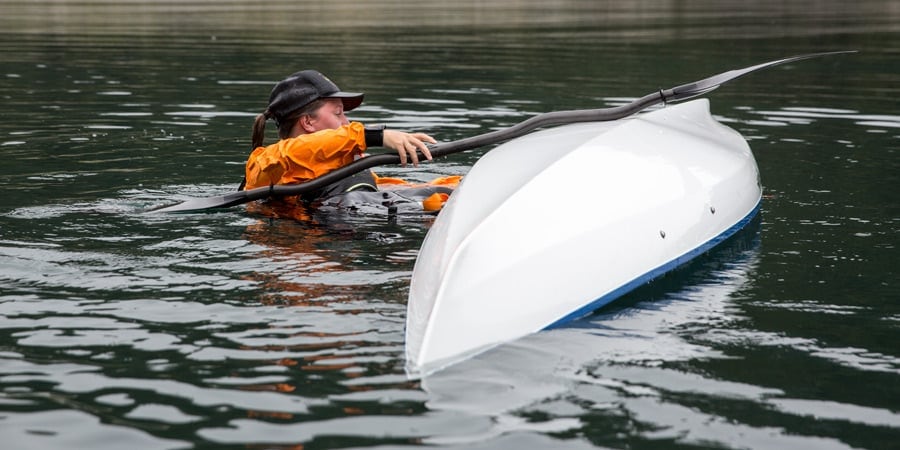
Once the last-ditch brace stroke has failed, take a deep, calming breath, then follow these steps:
- Perform a wet exit. (Tip: Whack your boat as a distress signal because someone might be close enough to hear you.) If you lost hold of your paddle, retrieve it now.
- Reach under your capsized boat and retrieve the paddle float.
- Hook one leg into your boat's cockpit; that keeps it close by and frees your hands.
Setting Up the Float and Righting the Boat
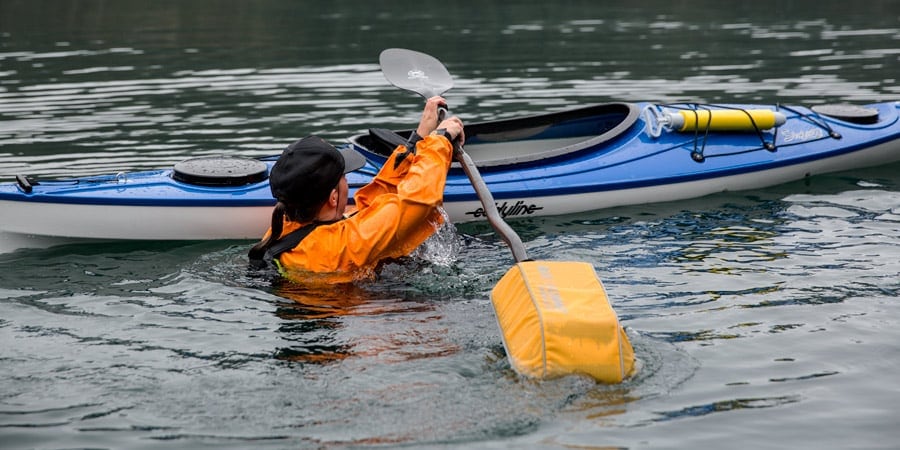
The goal is to get the float on the paddle, the boat upright and the paddle properly positioned:
- Quickly attach the float to a paddle blade (just as you practiced on shore).
- Slide your leg out of the boat, reach under the cockpit and grab the far edge of its coaming.
- Pull that edge toward you while simultaneously using your opposite hand to push the hull up and away from you. Push up hard on the hull as you do this to minimize how much water gets inside as you flip the boat upright.
- If cold water isn't a major concern and excess water is in the boat, then pump water out of the boat now.
- Create an outrigger: Orient the paddle's shaft perpendicular to the boat, with one blade of the paddle right behind the cockpit and the other end with the float in the water. (You can slip the paddle blade under the deck rigging for added security, though this isn't mandatory.)
Re-entering the Boat
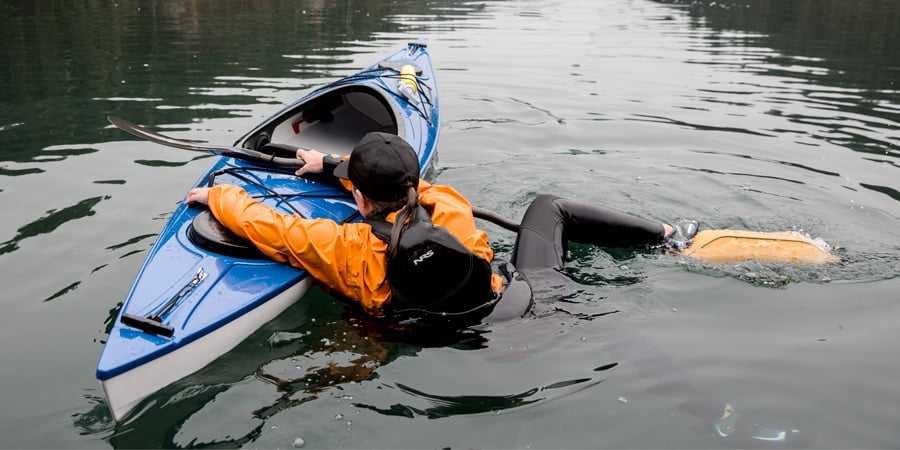
The goal is to get out of the water, onto the deck, into the cockpit and back on your way:
- Position yourself facing the boat on the stern side of the paddle shaft; grip the shaft and cockpit coaming firmly with one hand; then grab the boat firmly on the far side with your other hand.
- Slip one knee over the paddle shaft; with your foot and calf stabilizing the paddle, use your inner thigh to push off the shaft and lift your body out of the water; then shimmy your body up onto the deck.
- With your chest on the stern of the boat and downward pressure still on the paddle and float, pivot your legs up and over the paddle until they're facing the bow of the boat; then slide them into the cockpit. (You'll be face down and backwards as you do so.)
- Pause to maintain stability, then roll your body within the cockpit. As you roll, your chest should angle slightly towards the paddle side of the boat; to prevent tipping over in the other direction, you must also maintain pressure on the paddle and float as you roll over.
- Stow your paddle float, then pump any remaining water out of your cockpit, reattach your spray skirt and resume your paddling adventure.
Advanced Rescues
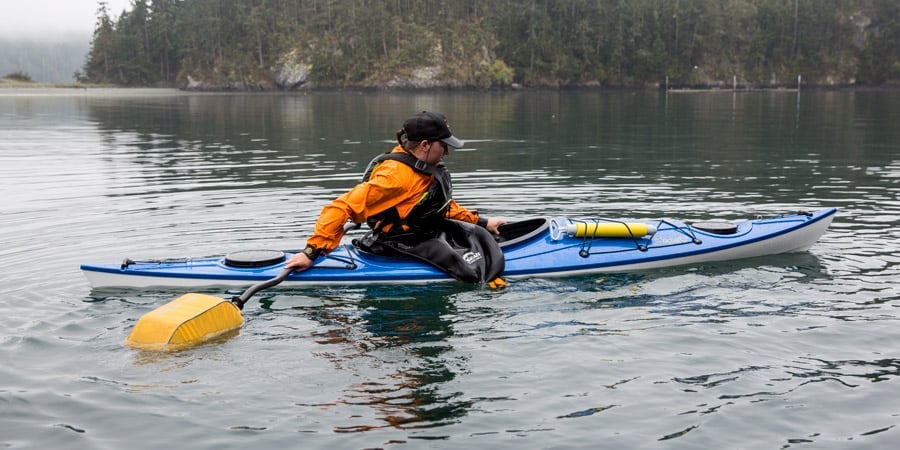
Don't take your mastery of a self rescue as a green light to paddle alone. Nor should this skill be the only rescue you learn: Others include the roll and the T-rescue. Your best way to learn all of these, of course, is with proper instruction. See if an REI store in your area has a class. You can also check with other kayak specialty shops or kayaking clubs in your area.
